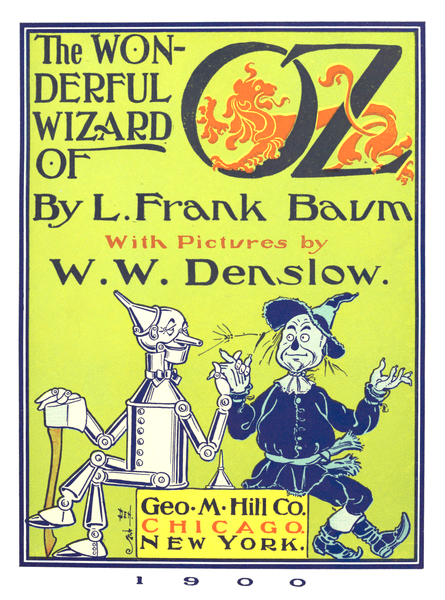Fan’s questions have been answered in this post.
Question: Theresa Grahmann Parma wondered why Dorothy carried a basket for the whole movie.
Answer: In L. Frank Baum’s book The Wonderful Wizard of Oz (1900), Dorothy packs a basket of provisions for herself and Toto before setting out on her long journey to find the Wizard of Oz. In the 1939 version, it may be assumed that Dorothy also stocked her basket with food when she ran away from her Kansas farm. It is logical that she would take it with her when in the Land of Oz. When filming first began, Dorothy did not have a basket. After production shut down temporarily in October of 1938—in order to make some critical changes—adding the basket gave Dorothy a way to carry a supply of apples as well as the Tin Man’s oil can (which previously he wore around his waist like a flask). Unlike so many artistic interpretations over the last seventy-five years, Judy Garland’s Dorothy never carried seventeen-pound Toto in her basket!
Question: Both Carolee McNormand and Stacey R. Sullivan wanted to know if the studio ever considered a sequel to The Wizard of Oz.
Answer: A sequel to The Wizard of Oz was not considered for two reasons. One, because the original film was extremely expensive to produce; and because most of the moviegoers who saw it in 1939-42 were children, it did not make a profit because children paid anywhere from a dime to a quarter to see it. Second, The Wizard of Oz was released just prior to World War II when a moratorium was put on costly “colossals,” as high-end pictures were called, for the duration of the War.
Question: Leslie Neal asked, “How’d they make sparks shoot out of the Ruby Slippers?”
Answer: The protective sparks that prevent the Wicked Witch of the West from removing Dorothy’s enchanted shoes were the result of superimposing film of electrical sparks with footage of the Witch reaching for the Ruby Slippers. The original special effects sheet notes varying intensities of electrical “juice” were used, which may have given rise to the urban myth that apple juice created the illusion—which is incorrect.
Question: Jayne Siler wondered about a copper-colored bag the Wicked Witch’s monkey servant hands to her in one scene.
Answer: It’s not a bag, but a hat. Specifically, the Golden Cap—a magical device taken directly from L. Frank Baum’s The Wonderful Wizard of Oz. (The Golden Cap in the movie scene even looks identical to the book illustrations). In Baum’s book, the Golden Cap allows its owner to summon the services of the Winged Monkeys three times. In the movie, the Wicked Witch has rendered Dorothy unconscious with her poisonous poppies’ spell and, in a brief scene cut from the film, she orders Nikko, her monkey familiar, to bring her the Golden Cap so that she can have the Winged Monkeys retrieve the Ruby Slippers. As this scene was cut out, what remains is Nikko bringing the Golden Cap to the Wicked Witch, who is by now enraged that Glinda has thwarted her plans by reviving Dorothy with a snowshower.
Question: Lisa Marie Michaud wanted to know if there were Witches of the North, East, and West, how come there’s no Witch of the South?
Answer: There is, or at least there was! In L. Frank Baum’s The Wonderful Wizard of Oz, there are indeed four witches representing four directional territories in the Land of Oz. The eastern and western witches are wicked while the northern and southern witches are benevolent. In the book, Dorothy first encounters the Good Witch of the North, who greets her and appears as a lovely but elderly lady with wrinkles and white hair. After the Wizard drifts away in his balloon, Dorothy and her friends must travel to find Glinda, the Witch of the South, who is also elderly but appears youthful and ageless with flowing red hair. The color favored in Glinda’s territory is red while the North witch wears a white gown decorated with stars. In compressing the story for the movie version, scriptwriters merged the two witches into a single character and combined their attributes as well.
Question: Deloris Acton asked, “Did Dorothy (Judy Garland) ever visit Kansas?”
Answer: The answer is: Almost! Early plans for filming The Wizard of Oz included a location shoot in Kansas after all the Technicolor scenes were shot. A crew had been sent there to scout out the area, document what Kansas farms looked like and (hopefully) film a Dust Bowl twister in action (that didn’t happen). But those plans were abandoned before production began in favor of finding a farm in southern California. In the end, the studio simply saved time and money (and had more of Judy Garland’s work time as a restricted minor) by constructing the Kansas farm on a soundstage.

